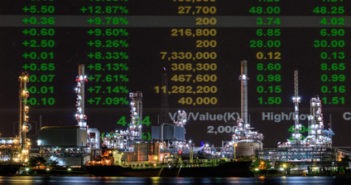- Venezuela is gripped in a deep political crisis that followed an economic one.
- The nation is a large oil exporter with the US importing a significant chunk of its oil.
- Here are three scenarios for the stand-off and the reaction in oil markets.
Venezuela has the world’s largest proven oilreserves but mismanagement by the regime led by Nicolás Maduro and falling oil prices sent the economy down and many citizens fleeing to other countries. The oil industry suffered as well. Low investment and US sanctions are set to push output to below 1 million. The South American nation produced around three million barrels in 2008.
The crisis escalated after the head of the national assembly Juan Guaidó declared himself interim president and was immediately recognized by the US, Brazil, Argentina, and others. His move followed a controversial election. The powerful military continues backing the regime and so does Russia. China, which has economic interests in the country, is also behind Maduro, but somewhat reluctantly.
So far, oil prices have not moved much on the news, but tensions are high and things can change quickly.
Here are three potential scenarios for the crisis and the reaction in oil prices.
1) Maduro clamps down on the opposition
The President continues enjoying the support of the military that feeds on the regime. The only high-ranking defection was of a military attache in the US but the generals have pledged their support.
After further protests, the people get tired of the standoff and show up in smaller numbers. Maduro sees this as a sign of weakness and clamps down on the opposition, perhaps arresting Guaidó at a later stage.
The world condemns the move and Trump announces further sanctions. However, the US continues buying Venezuelan oil at some capacity.
The economy continues deteriorating and neighboring countries receive more migrants. The oil industry deteriorates with the rest of the country and output gradually slides.
In this scenario, oil prices are marginally bid from falling production.
This is the default option unless things change.
2) Successful transition of power
International pressure is mounting with top European countries also recognizing Guaidó as the interim president. Protests continue in the streets. The pressure could escalate if the US and other nations impose fresh sanctions that target top individuals and their bank accounts.
If the military understands it is cornered with the President from all sides, it may show Maduro the way out, recognizing Guaidó alongside and setting a date for fresh elections.
In this scenario, international aid pours into Venezuela alongside investments in the petrol industry. Expectations for a ramp up in production may push oil prices lower even before output rises.
The probability is medium. A lot depends on international pressure.
3) Civil war
The nightmare scenario for Venezuela is that only part of the top military brass defects while another part remains loyal. A civil war erupts with many citizens caught in the middle.
The probability is low as nobody wants bloodshed. However, it cannot be ruled out amid the standoff.
In this scenario, production halts abruptly due to a mix of a fight over oil installations and sanctions. oil spike as a response.
However, after the initial panic, prices stabilize. The next move depends on how such a terrible outcome plays out. A quick end may result in oil output returning to normal. A long-lasting strife could keep crude prices bid for a long time.
Conclusion
If you are trading oil, especially US WTI Crude Oil, paying attention to the news from Venezuela is a must.
Get the 5 most predictable currency pairs
